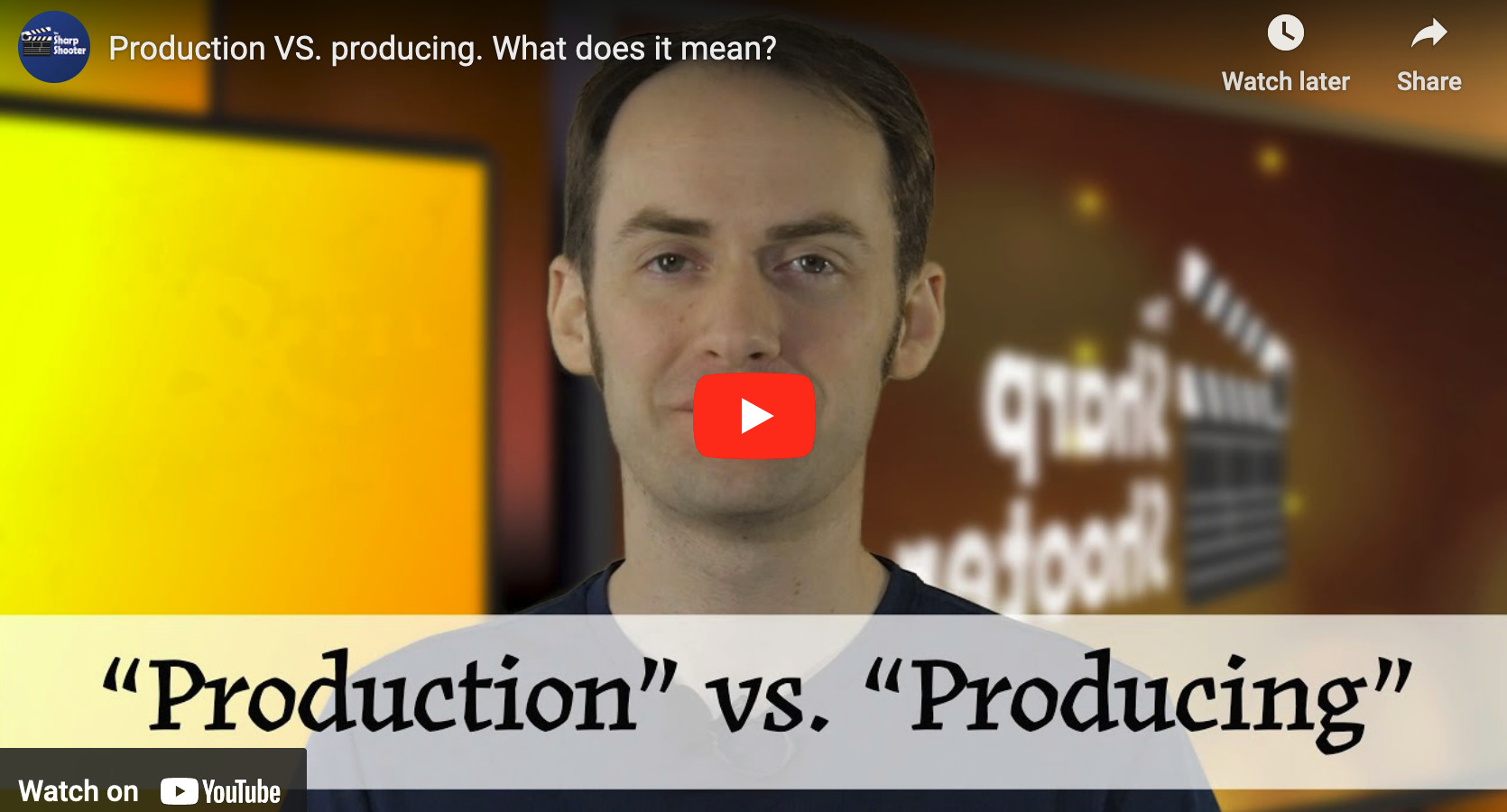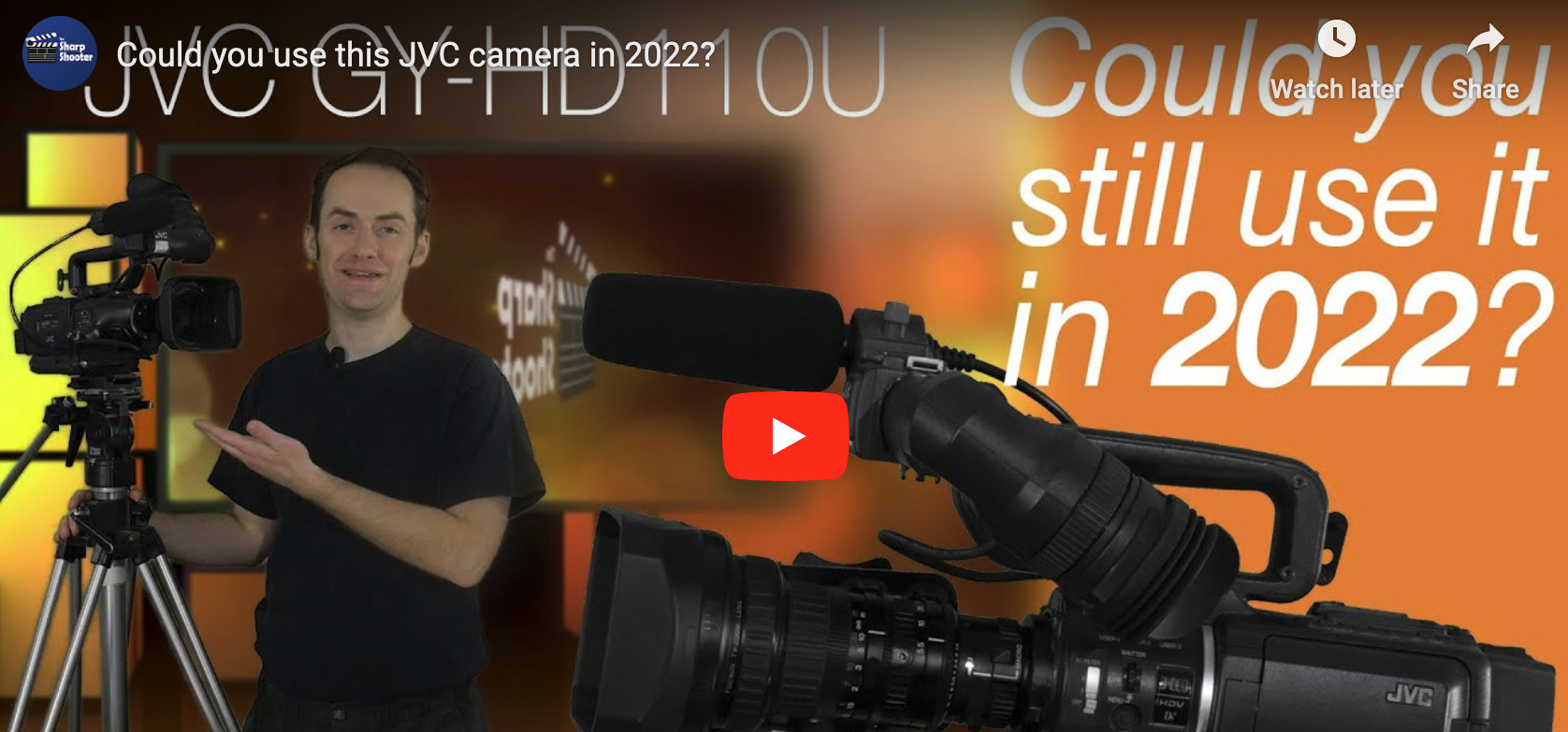Pro lens shoot-out: $1,600 DZOFilm vs $150 Canon
We’re comparing two video lenses: the modern DZO Film 20-70mm Cinema Lens and a vintage Canon 9-117mm B4 broadcast lens.
Both lenses zoom, are parfocal, have manual controls, and large apertures. But – the DZO sells for about $1,600 new and $1,300 used. The Canon sells really cheap, anywhere from $50-200. I picked up mine for 100 bucks, which include the optional lens hood and a servo motor.
Each one has its pros and cons, which we’ll discuss in detail, and then I’ll show you 4k video samples from both lenses using a Panasonic GH4.
But first, let’s talk about the basic features of each lens.
Let’s start with the DZO. It’s a modern lens introduced around 2019.
It has a micro 4/3 mount and pairs natively with BlackMagic Design cinema cameras, Z Cams, the Panasonic GH series, and the JVC GY-LS300.
The official model name is the Linglung 20-70. As the name suggests, it’s a 20-70mm focal length, which is a 40-140mm full frame equivalent.
It’s also parfocal, meaning it has a constant aperture throughout its focal length, and will maintain it’s focus as you zoom in/out.
The lens has a T-2.9 aperture and 12-blade iris, which is manually controlled with an iris ring. Lastly, zoom and focus are manually controlled by the respective rings too.
The lens has no automatic or electronic controls.
Like other “cine” lens in this price point, it comes with a basic lens cover, but no other accessories. Personally, I wish it came with a basic lens hood, but it doesn’t.
Fortunately, the front of lens is threaded and accepts standard 77mm filters, so you don’t necessarily have to buy a matte-box to use filters. But, let’s be honest, most people that are buying this lens are pro-filmmakers, and they’re expecting to use a matte-box with it.
Now, let’s look at the Canon.
This model is the J13X9B-II A. As part of the model number suggests, it has a 13x zoom range.
Like the DZO, it’s parfocal. The aperture range is F1.6 to F.16 which is manually controlled with an iris ring. And like the DZO, zoom and focus are controlled by the respective rings too.
It’s what I would consider to be a “vintage” lens. I’m not sure when it was released, but based on other broadcast camera’s I’ve used in the past, I would imagine it’s at least 25 to 30 years old.
Wait a minute, I’m 32. Does that mean I’m vintage?
It is a B4 mount, which is common on broadcast/ENG-style cameras, but it’s not going to fit our Micro 4/3 mount without an adapter. Fortunately, there’s a pretty good aftermarket for those adapters. Today, I’m just going to show you the most basic adapter I could find, which sells on eBay for about $60. There are several options, and some come with with more functionality, which we’ll talk about later.
The Canon’s focal length ranges from 9mm wide to 117mm tight, but…full disclosure…that length is rated for it’s native 2/3-inch mount found on the broadcast cameras it was designed for, so take that with a grain salt when trying to figure out the conversion factor for your camera.
What I can tell you is that compared to the DZOFilm, it shoots a little bit wider and a little bit tighter, so there’s more zoom range.
Another factor that throws off the focal length conversion on this particular lens, is that it’s equipped with a 2-x optical extender.
And here’s something important to remember…As with any lens, there’s an inverse relationship between focal length and exposure. In this case, the extender doubles the lens’ focal length, so that means you lose about half of the light coming into the lens before it reaches its sensor.
When comparing it to the DZO Film lens with the 2-x extender engaged, you’re losing about about 4 stops of light with the Canon – and that’s a lot.
That might be disappointing to some of you using this lens, but you’ve got to keep in mind these lenses were designed for ENG broadcast cameras – ENG meaning, “electronic news gathering”. I used to be a videographer for a TV station, and I used those extenders when I wanted to get a tight shot of something that was physically far away. I remember using it when shooting minor league baseball games, so I could get a close-up of the pitcher, although I was standing way out in the stadium. In that use case, I didn’t care about losing light. I’d jack up the gain, drop my shutter speed, and open the iris. It might not have been film-worthy quality, but it got the job done for the evening news highlights.
All that’s to say this lens wasn’t designed for modern cameras, and here’s another thing you’ll have to overcome if you plan to use it.
Once you mount it onto your camera, you’ll notice it vignettes pretty badly because the projected image from the back of the lens is only meant to cover small sensors, usually for standard definition cameras.
The good news is that you have two options to overcome this obstacle. One, you can engage the extender, which will double the projected image size from the back of the lens, and will cover your sensor. The downside, is that you’re going to need to compensate for losing that light, so you’ll be shooting with wide apertures, low shutter speeds, and potentially higher ISOs. While that might work for your style of shooting, it is limiting. And the sweet spot on this lens isn’t wide open…it tends looks just a tad soft, but it sharpens up around F2.8.
Or, you can go with option two. A lot of you are going to cringe when I say it, but trust me…it can work with great results.
Many cameras have a built-in “tele-conversion” feature, which is similar to a digital zoom.
This feature is referred to by different names among different manufacturers. Panasonic calls it “Extra Tele Conversion”, and it’s abbreviated as “EX Tele Conv” in the camera’s menu, which I can verify on the Panasonic GH4. JVC calls it “Variable Scan Mapping”, which I can verify on the GY-LS300
It works by resizing the image frame to a smaller portion of your sensor.
But, there are limitations. When using the Panasonic GH4 (or JVC LS300), it’s only effective while shooting 1080p mode for this lens. If you’re shooting in 4k, you won’t lose the vignetting.
Either way you decide, I would only suggest buying a vintage B4 lens that has a 2x extender. There are many flooding the market without the extender, and they tend to be cheaper. But if you buy one, you’re probably going to be disappointed based on what we just talked about.
And, I shouldn’t have to say this, but I will – don’t buy either of these lenses if you’re using Sony or Canon cameras, because they don’t play nicely with Micro 4/3.
Another cool function the vintage Canon lens may have, depending on which one you buy, is a servo. It’s a little motor that smoothly engages the zoom ring on the lens and can zoom out or zoom it at variable speeds. My lens has one, but I took it off to save a little bit of weight on this rig. If you plan to use the servo, you might consider buying this PowerLynx mounting kit, which comes with a portable power supply for the servo system, so you can use it on the go.
The power cable for the servo system is called a 12-pin hirose connector. You can find adapters for an affordable price on eBay if you want to power the servo in a different way.
Lastly on the Canon, you can typically find one with a lens hood. The lens hood has a threaded front that accepts 86C filters – that’s an 86mm size, and the “C” stands for coarse threads. Although they’re not common on modern cameras, you can find 86C filters used on eBay or new from camera shops like B&H. However, being a filter this large and unusual means you’re going to pay more, since there’s less demand. And, you cannot attach screw-in filters to the lens without the hood.
Another feature both lenses have is manual backfocus adjustment. This is critical to ensuring each lens can produce sharp images with a number cameras that have different sensor placements.
So, where can you find these lenses? You can pick up a brand new DZOFilm on B&H, or find them used on several camera store websites. There’s a lot of options. But, the Canon’s availability is limited to sites like eBay.
It goes without saying, the DZOFilm has a significant advantage when it comes to mounting to the camera. For many people, it’s worth paying more for something you won’t have to fool around with.
But if you like to tinker, you’re a cheapskate like me, or you have some of these lenses laying around from vintage equipment, you might have some fun and realize you can bring new life to an old broadcast lens.
Alternatively, if you are looking for zoom lenses with constant apertures that are not parfocal, I would highly suggest exploring the Panasonic Lumix 35-100mm F2.8 or the Olympus M.Zuiko 40-150mm f2.8 Pro. They’re excellent lenses that are designed specifically for the Micro 4/3 system, and are equally great for video or photography applications. Each of those lenses are lighter and more portable than the DZO or Canon, and in my opinion, they’re more practical.
Now, let’s take a look at what you’ve been waiting for and watch some samples from each lens. Again, I’m shooting on two Panasonic GH4s with identical settings, in 4k resolution at 24 frames per second. Each of the lenses has a simple UV filter on the front.
The camera mounted with the DZO Film is shooting without any modifications. The camera mounted with the Canon lens is using the 2x optical extender.
I’m Tyler, and this is the Sharp Shooter. Teaching you valuable skills to make better videos.



